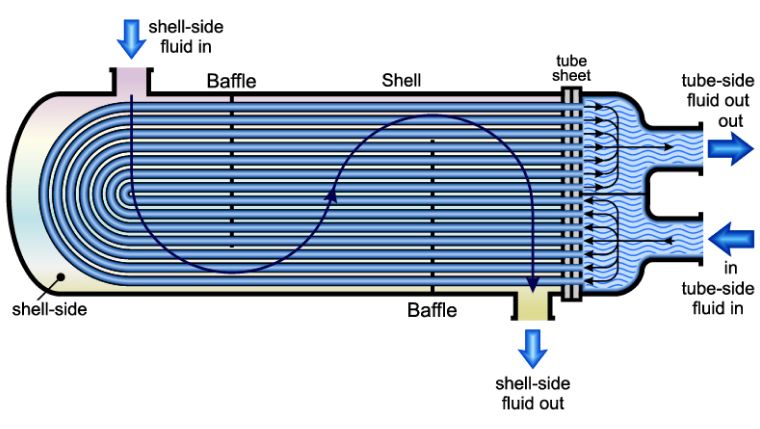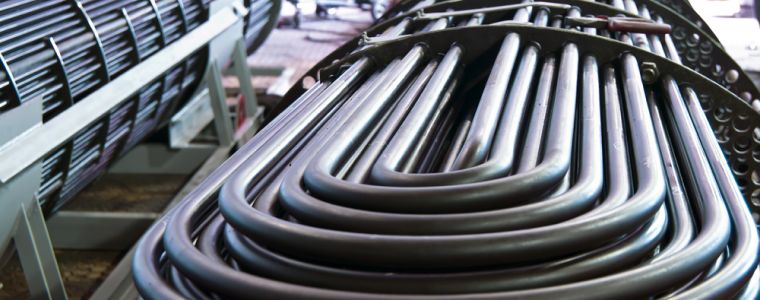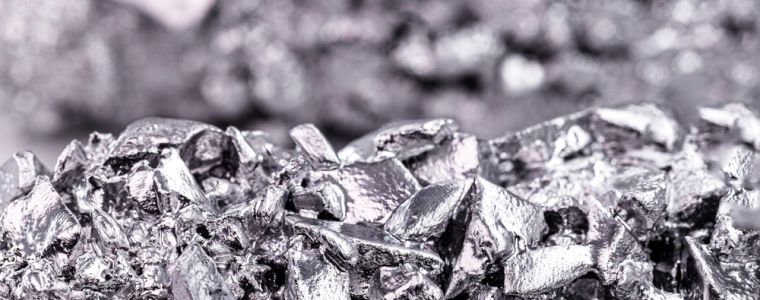Choosing the Correct Condenser Materials for Power Plants

Condensers are pivotal in various industrial and HVAC applications, playing a critical role in converting vapour streams into liquid. They function through heat transfer and compression techniques. They find applications in cooling gases and process fluids and are integral components of systems designed to cool external environments, including air conditioners.
Condenser in Power Plant: Understanding Different Types

The condenser in power plant: Every condenser is built to specific standards, considering flow rates, operating pressures and temperatures and condensing capacity. They are versatile, finding use in automotive air conditioning, central air systems for buildings, process cooling, refrigeration and steam power turbines in power plants.
Heat Exchangers
These can transform gas into liquid via heat transfer. There are two primary types:
Direct Contact Condensers: These facilitate heat transfer through the direct interaction of gas and liquid, typically of the same material.
Indirect Contact Condensers: They use a conductive boundary, like a shell or tube, for heat transfer, avoiding fluid mixing.Large surface condensers with “U” bent tubes are used in coal-fired power stations and nuclear power stations.
An In-Depth Look: Surface Condenser

A surface condenser is a type of heat exchanger integrated into the steam boiler exhaust which drives the turbines in power stations. The process of gaseous-liquid conversion condenses superheated steam into pure water. In addition, the condenser recovers heat and generates energy. The pure water and the recovered energies are recirculated into the steam generators and boilers, making the condenser performance a significant factor in the overall efficiency of power plants.
Condenser in Power Plant: Corrosion
Corrosion in condensers is a serious issue which can cause expensive equipment damage and threaten operational efficiency and safety. Therefore, alloys used in the construction of the “U” bent tubing condensers must be strong and practically immune to all corrosion processes in challenging operational conditions, e.g. hot, cold and cyclical changes in temperatures.
Alloy Selection

Titanium is the best technical choice for condenser tubes as it exhibits corrosion resistance to all types of water and significant resistance to general pitting corrosion, crevice corrosion and stress corrosion. The corrosion resistance of this low-density, high-strength material in a boiling water environment is significantly higher than that of copper-nickel alloys. Due to increasing environmental concerns the copper-bearing alloys are now rarely used.
Several million metres of titanium welded tubes, especially Ti Grade 2, (ASTM B 338, ASTM B 861, ASME II Part B SB) are in service worldwide. The power industry has proved titanium to be the most reliable choice for condenser tubing. While Titanium tubes constitute the main part of a condenser, a lot of titanium sheet and plate products are used in the construction of baffle plates and vessels as well as cladding for the condensers’ shells. This avoids the need for cathodic protection and issues with galvanic corrosion.
Experience gathered from these condenser units in various conditions has guaranteed a long-life expectation of titanium components which virtually eliminates condenser corrosion problems from power plant economics. However, due to the high price and installation cost of titanium tubes, they are generally only used in coastal and nuclear power stations.
Stainless Steel Tube (ASTM A 249 / ASME SA 249) is also used extensively, when possible, and has good mechanical properties, corrosion resistance and economy. Alloy 800H/AT (ASTM B 407, ASME SB 407) is another austenitic heat-resistant alloy. Designed for high-temperature structural applications, the strength of 800H/AT is achieved by controlled levels of carbon, aluminium and titanium along with an 1148°C minimum anneal to achieve a grain size of ASTM 5 or coarser.
Alternative Materials: Stainless Steel and Alloy 800H/AT
While titanium leads in performance, stainless steel tubes (ASTM A 249 / ASME SA 249) are also widely utilised. They offer a balance of good mechanical properties, corrosion resistance, and cost-effectiveness. Another notable material is Alloy 800H/AT (ASTM B 407, ASME SB 407), an austenitic heat-resistant alloy designed for high-temperature structural applications. It gains its strength from controlled carbon, aluminium, and titanium levels, and a specific annealing process.
Duplex Stainless Steels
Duplex stainless steels, 2205, 2507 (ASTM A789, ASME SA789) have excellent corrosion resistance, good mechanical, and welding properties with high thermal conductivity, but processing can be difficult with high costs.
We’ve looked in-depth at a surface condenser, the importance of the correct condenser in power plant and understanding the various aspects of condensers. From types and material properties to technical specifications and standards, is vital to select the right component for your plant. For further help and support, get in touch today.
Blogs of Interest:
Alloy C276 and 22 in Flue Gas Desulphurisation Plants
Distillation Columns Types of Corrosion Resistant Metals and Their Uses
FAQs
What does a condenser do in a plant?
Condensers are essential in power plants for their pivotal role in the steam power cycle. They recover heat energy from steam, significantly enhancing the efficiency of the power generation process.
Why does a plant need a condenser?
Surface condensers in thermal power plants serve a dual function. They are designed to condense the steam exiting a steam turbine, maximising the plant’s efficiency. Additionally, they transform the turbine exhaust steam back into pure water, known as steam condensate. This recycled water can then be reused in the steam generator or boiler as feed water, promoting efficient resource utilisation.
What is air cooled condenser in power plant?
An Air Cooled Condenser (ACC) operates as a direct dry cooling system where steam condenses within air-cooled finned tubes. The key to its functionality lies in the cool ambient air that flows outside these finned tubes, effectively removing heat and enabling the ACC’s operation.
